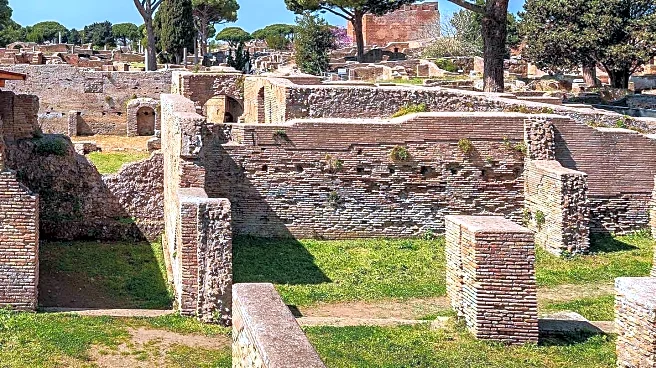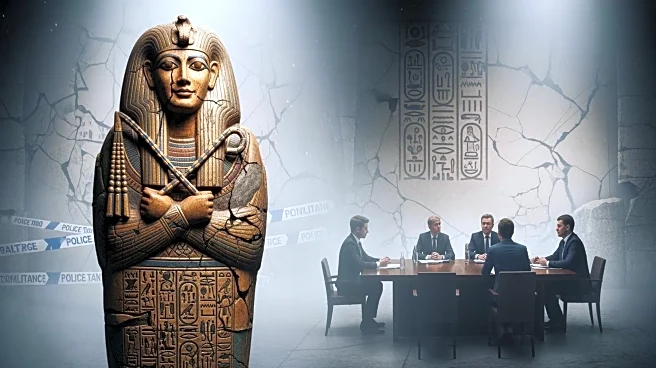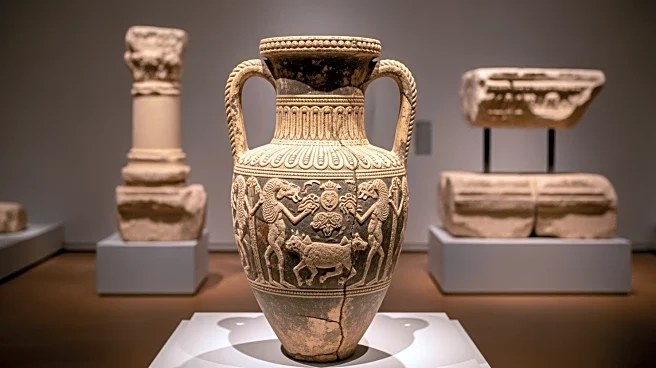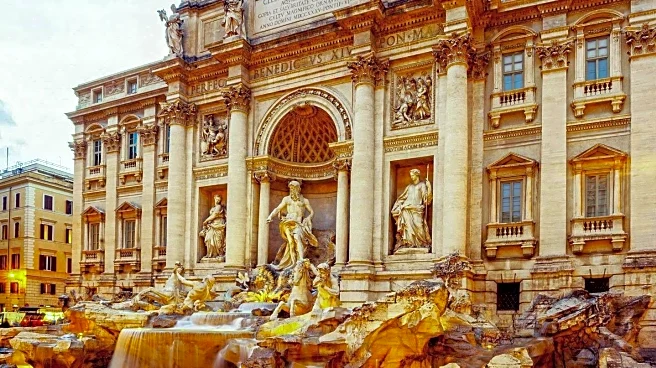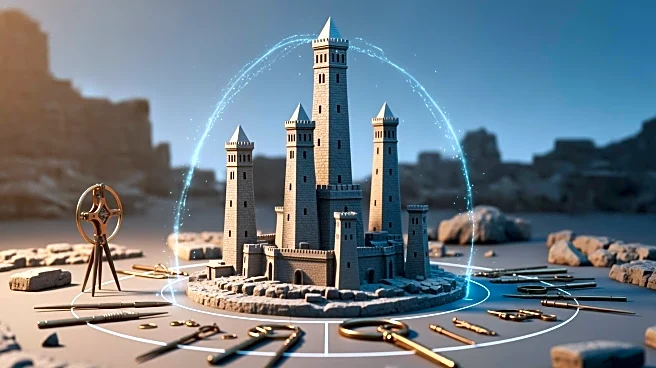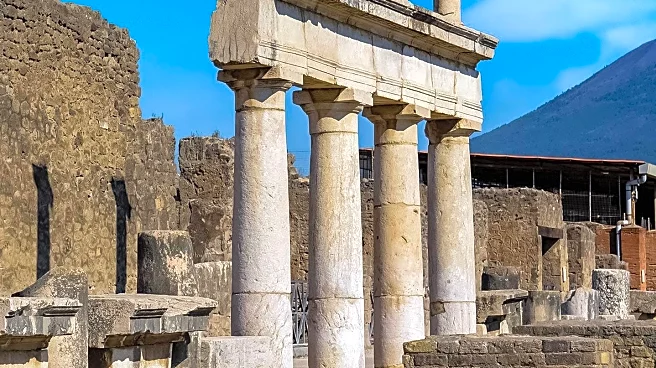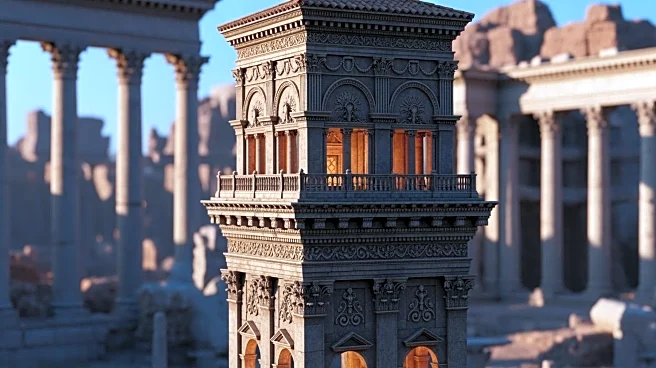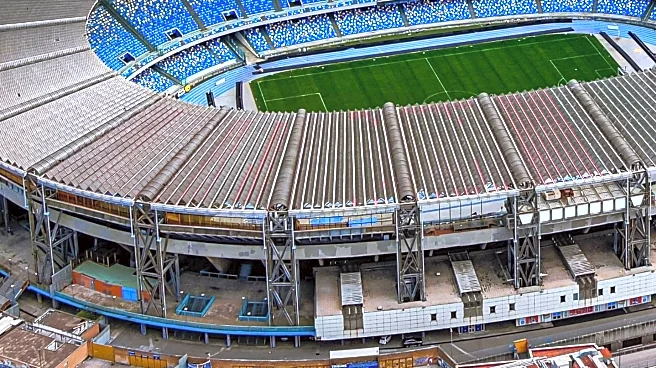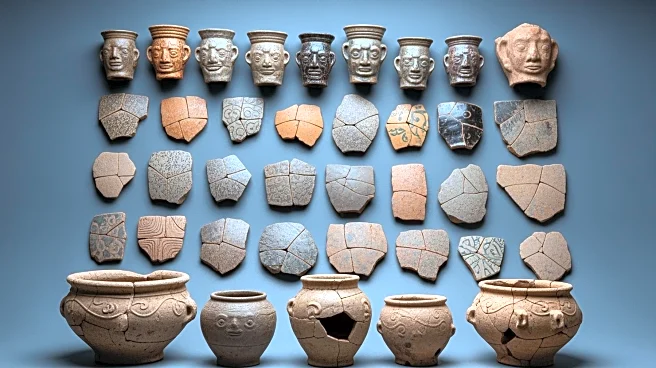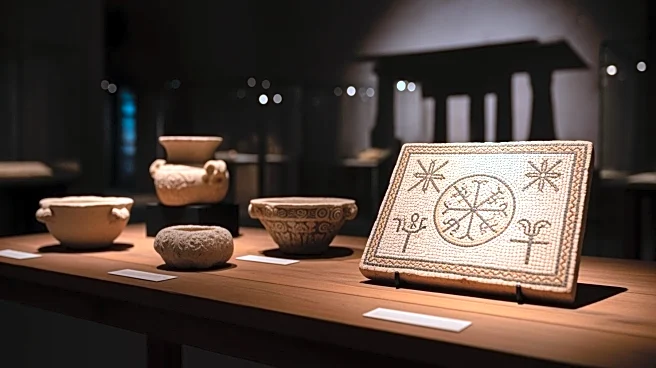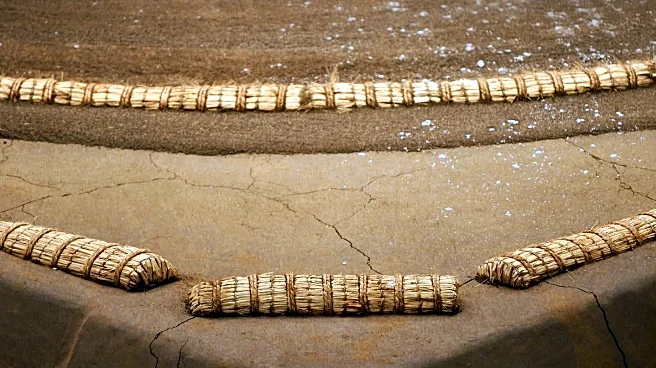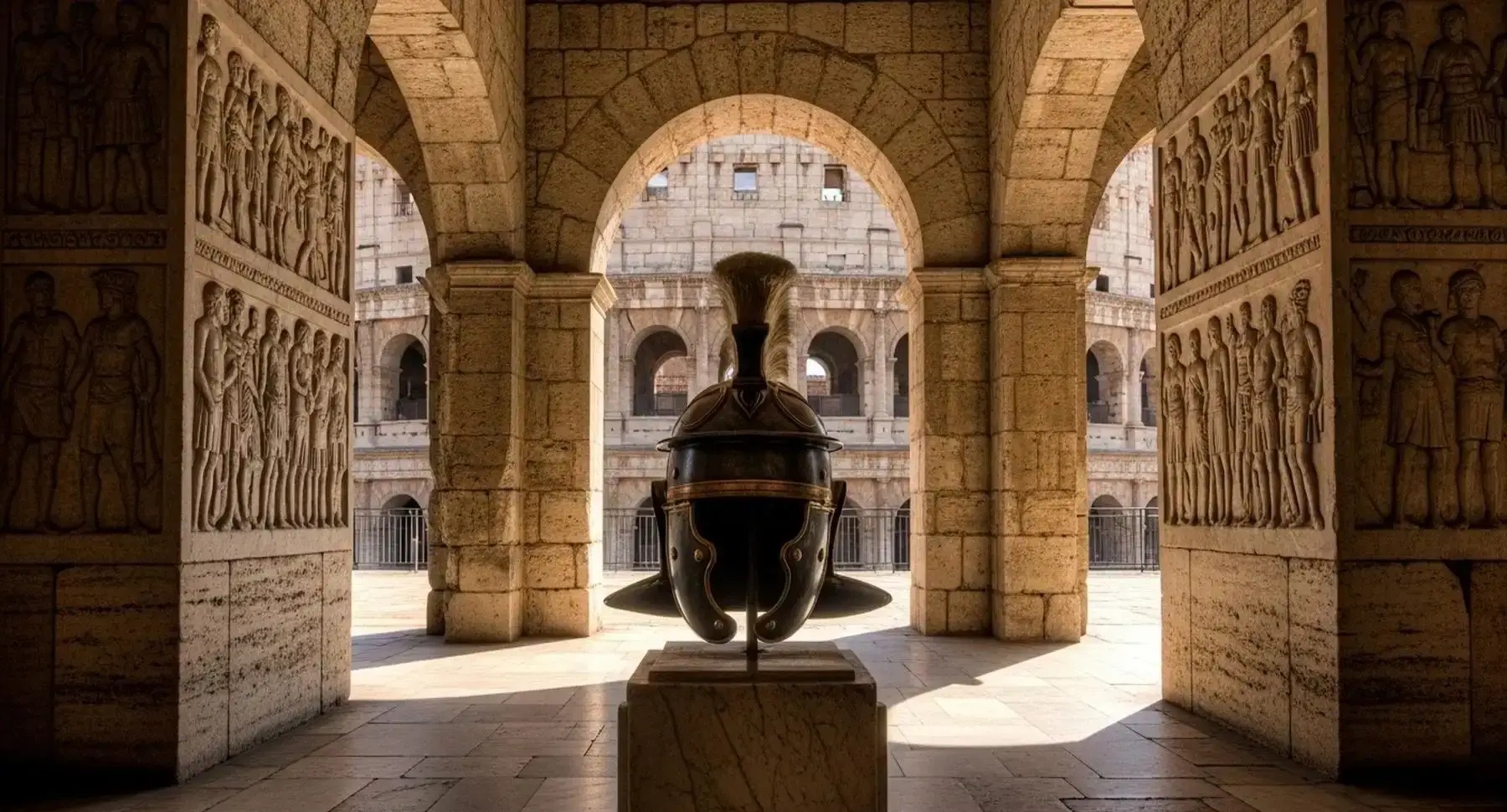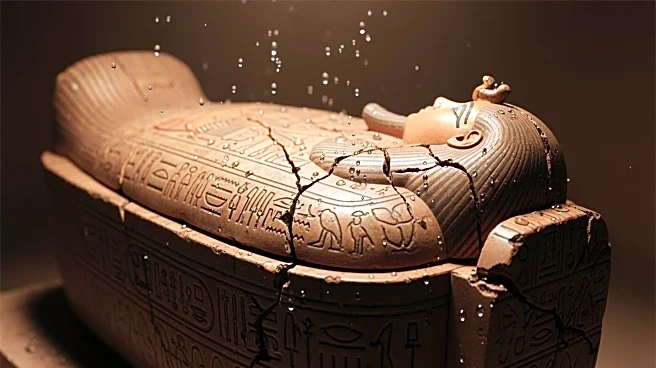What's Happening?
Archaeologists have uncovered a large stone basin dating back to 250 B.C.E. in the ancient city of Gabii, near Rome. This discovery challenges the traditional narrative of Rome's humble architectural beginnings, revealing early Roman grandeur influenced
by Greek architecture. The basin, carved directly into bedrock, was likely part of Gabii's forum, a central public space. The ongoing excavations aim to explore nearby plazas and a potential temple, which could provide insights into ritual artifacts found in the area.
Why It's Important?
The discovery of the ancient water basin in Gabii offers a rare glimpse into early Roman city planning and architectural experimentation. It suggests that Roman builders were influenced by Greek architectural styles well before Rome's conquest of Greece. This finding could reshape historical understanding of Roman urban development and its cultural exchanges with neighboring civilizations. For archaeologists, Gabii presents an invaluable site for studying Roman history without the complexities of urban layering found in Rome itself, potentially leading to new insights into ancient Roman society and culture.
What's Next?
Future excavations in Gabii will focus on the area surrounding the basin, including a large stone-paved area and a nearby building that may be a temple. These efforts aim to uncover more about the city's layout and the role of ritual offerings in its history. The site has been designated as an archaeological park, ensuring long-term research and preservation. The findings could contribute to a broader understanding of Roman religious practices and urban development, offering new perspectives on ancient Roman life.
